Fisons Weedkilling Train
Carriage Conundrums - top page
Weedkilling Train Carriages - top page
In 1954 Fisons had taken over over Pest Control Ltd, a firm based at Hauxton, near Great Shelford, Cambridgeshire. The company had been formed in 1939. The main site was on the east side of the A10, between the Church Road turn and the river. Offices and laboratories were at the front of the site and pesticide manufacturing took place there. Following takeover the company traded as Fisons Pest Control Ltd, from 1969 Fisons Cambridge Division and from 1970 Fisons Agrochemical Division.
Although actually in Hauxton the postal address was Harston, Cambridge CB2 5HU, this was changed when Harston telephone numbers were changed to Cambridge ones (ie six digit Harston numbers being prefixed by 870). The company address then became Hauxton, Cambridge CB2 5HU at the same time as phone numbers changed. The company research facility was at Chesterford Park which is near Great Chesterford with a Saffron Walden postal address.
The Fisons site in Hauxton closed in 2004 and the remaining part of what was by then Bayer Crop Science moved to the Cambridge Science Park, ironically not far from Chesterton Junction. The land at Hauxton was contaminated and redevelopment only commenced recently.
The first train ran in 1957 and consisted of various equipment mounted on a wagon. The concept was then developed over the following years. It has not been established when the first Fisons weedkilling trains were run that included former carriages. However, the book 'The History of Pest Control' published by Fisons in 1976 mentions a second train being added in 1963, referred to as the Mark IIIa. The following two pictures are annotated 'Fisons Mk IIIa Weedkilling Train' on their mounts and are thus believed to be of that train. A Mark III train, presumably to similar specification having been introduced in 1960. These are presumed to be the first trains to use carriages.
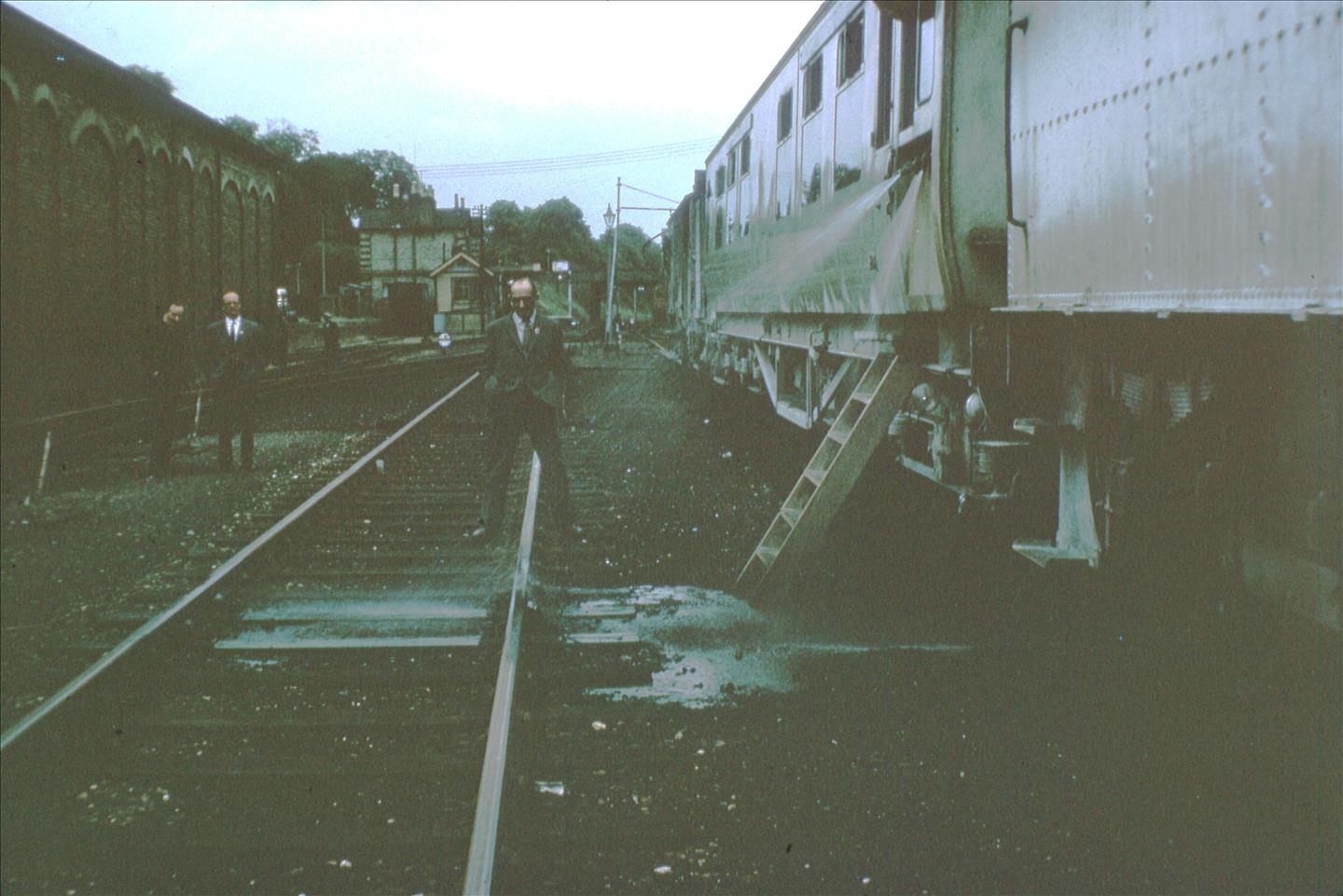
This picture shows what is believed to be the Mark IIIa Train. The location and date are not known but the slide mount is dated May 1966 although it is thought to be a copy of an earlier print. Michael Wild collection

This picture also shows what is believed to be part of the Mark IIIa Train. The location and date are not known but the slide mount is dated May 1966 although t is thought to be a copy of an earlier print as evidenced by the blossoming chestnut trees. The green carriage shows signs of spray stain so was presumably also part of the train. Michael Wild collection
The next train was designated Mark IVA, but is thought to have used the carriages from an earlier train. By 1969 Fisons Pest Control had two trains, these are presumed to have been the Mark IVA and Mark V. The pictures below are of the Mark V train and are believed to have been taken in 1967 in the sidings opposite Cambridge station where the trains stabled at the time. Both trains were formed of a Spray Van and Staff & Dormitory Coach converted from LMSR carriages, presumably including coaches from the Mark III and Mark IIIA trains. In addition BR supplied a number of former LNER/BR 4-whl Fish Vans to augment the trains at various times. These trains were capable of operating at up to 50 mph.

The Spray Coach of the Fisons Pest Control Mark V train converted from a LMS Open Third coach at Cambridge in 1967 Alan Warren
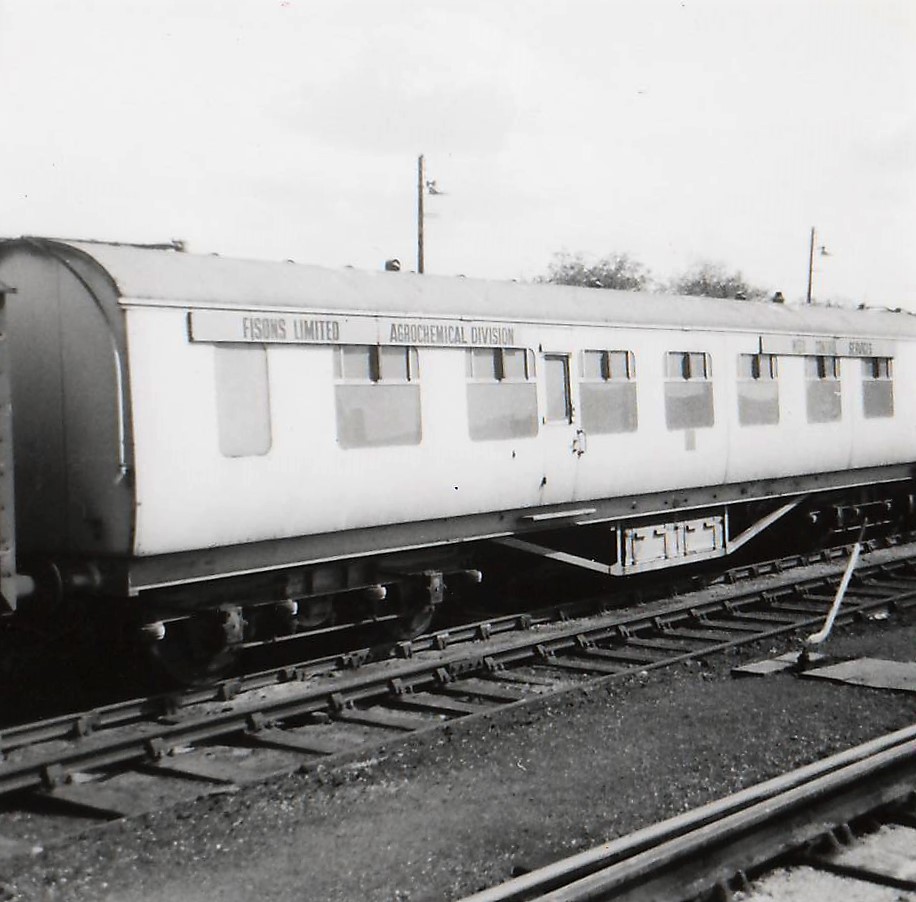
The Staff & Dormitory Coach of the Fisons Pest Control Mark V train converted from LMSR Corridor Third 2156 at Cambridge in 1967. Alan Warren
As Foxton was not far from the companies base this was considered a much more suitable stabling location than Cambridge when the trains were not in in use. It is not known though when using the former goods shed and sidings adjacent to the up line, on the Shepreth side of the level crossings (the Cambridge and Barrington roads had separate level crossings at Foxton in those days), started.
In 1969 the fleet consisted of:-
| Number | Formerly | Use | Train |
| ??? | LMS Open Third (Lot 1401) | Spray Coach | Mark IV |
| ??? | LMS Open Third (Lot 805) | Spray Coach | Mark V |
| 2156 | LMS Corridor Composite (Lot 1405) | Staff & Dormitory Coach | Mark V |
| ??? | LMS Corridor Brake Third (Lot 1506) | Staff & Dormitory Coach | Mark IV |
The only other pictures so far traced of the trains prior to 1975 can be found at 1968 photograph and 1973 photograph The carriages were painted white. The only numbers actually carried were on the frames and these were soon oblierated by spray stain. This might partially explain the lack of enthusiast reports.
Private Owner Coach Numbers were introduced in January 1974 but were not immediately applied to all Weedkilling Train Carriages. Also in 1974 BR allocated departmental numbers to five LNER/BR 4-whl Fish Vans used with Weedkilling Trains trains.
These were:-
| Number | Formerly | Use |
| DB975387 | BR Fish Van 87968 | Stores Van |
| DB975388 | BR Fish Van 87747 | Stores Van |
| DB975389 | LNER Fish Van 75345 | Stores Van |
| DB975390 | LNER Fish Van 75424 | Stores Van |
| DB975391 | BR Fish Van 87465 | Stores Van |
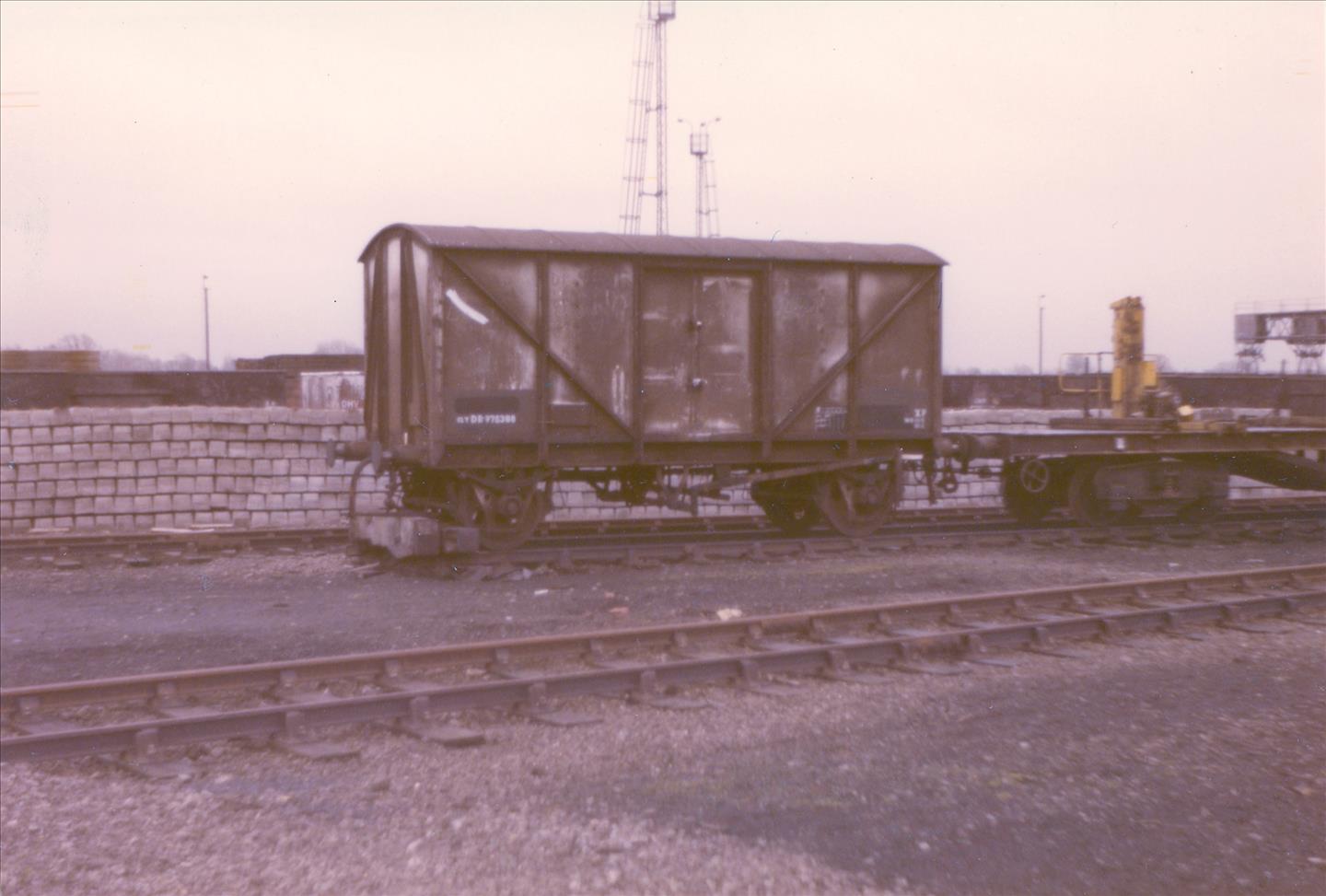
DB975388 that had seen use in the BR Eastern Region Weedkilling Train had found its way to Chesterton Junction when photographed on 7th March 1981 Peter Hall
It would appear that only DB975389, DB975390 and DB975391 subsequently saw use with Fisons in train formations. They being formed in the surviving Mark IVA Train with FA99903 and FA99905 until replaced by FA99906 (see below). DB975387 and DB975388 being used in the BR ER Weedkilling Train although the latter did find its way to Chesterton Junction in the early 1980s.
In 1975 a new train was formed to replace the existing Mark V train. This was painted in a Yellow and Green livery and formed as shown below. It was capable of operation at 60 mph and referred to as Mark VI. The Staff & Dormitory Coach from the replaced train was retained whilst the Spray Coach that had been converted from an LMS Open Third (lot 805) was subsequently scrapped.
| Number | Formerly | Use |
| FA99900 | BR Gloucester RC&W DTC 56315 | Spray Coach |
| FA99901 | GWR Gangwayed Passenger Brake 150 | Stores Van |
| FA99902 | GWR Gangwayed Passenger Brake 164 | Stores Van |
| FA99904 | LMS Corridor Composite 2156 (Lot 1405) | Staff & Dormitory Coach |
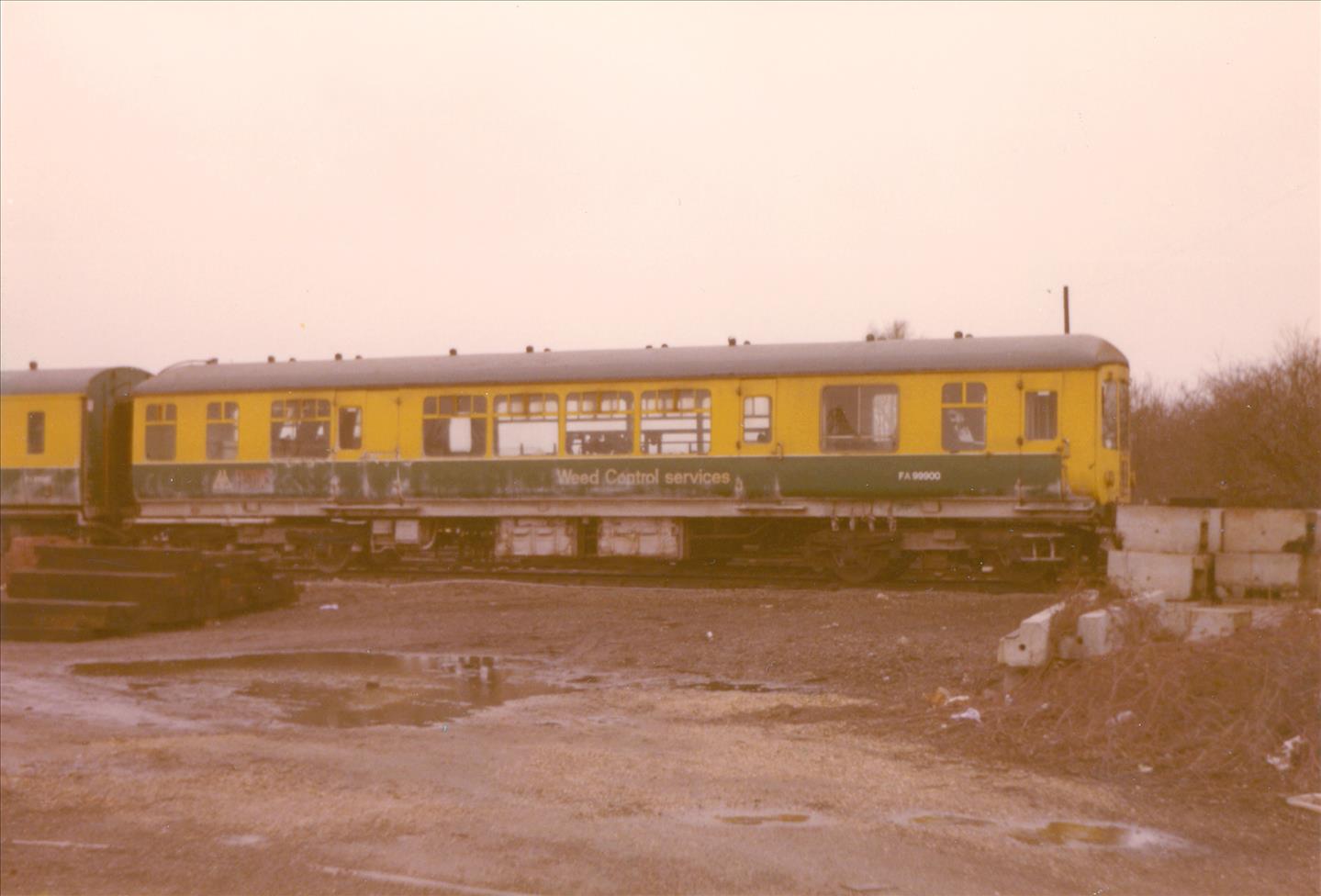
Included in the formation of the new 1975 train was Spray Coach FA99900, this had been converted from BR Gloucester RC&W DTC 56315. It is pictured at Chesterton Junction on 7th March 1981 in a rather work stained condition. Peter Hall

Included in the formation of the new 1975 train was Stores Coach FA99901 that had been converted from GWR Gangwayed Passenger Brake 150. It is pictured on display at Liverpool Street Station on 9th May 1975. Trevor Davis
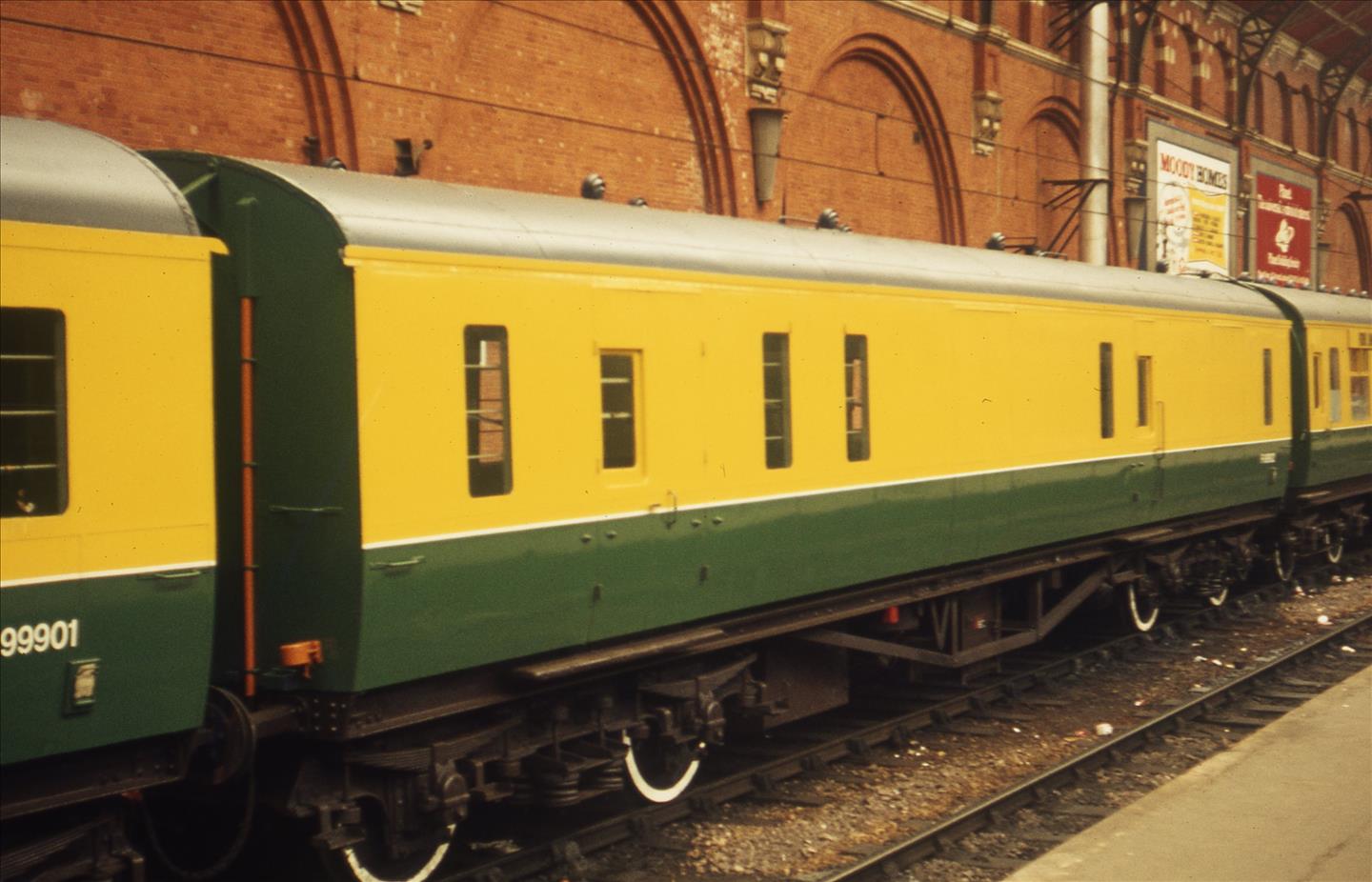
Included in the formation of the new 1975 train was Stores Coach FA99902 that had been converted from GWR Gangwayed Passenger Brake 164. It is pictured on display at Liverpool Street Station on 9th May 1975. Trevor Davis

The new train formed in 1975 visited London Liverpool Street on 9th May that year prior to entering service. Their is was inspected by BR and trade union representatives. Trevor Davis
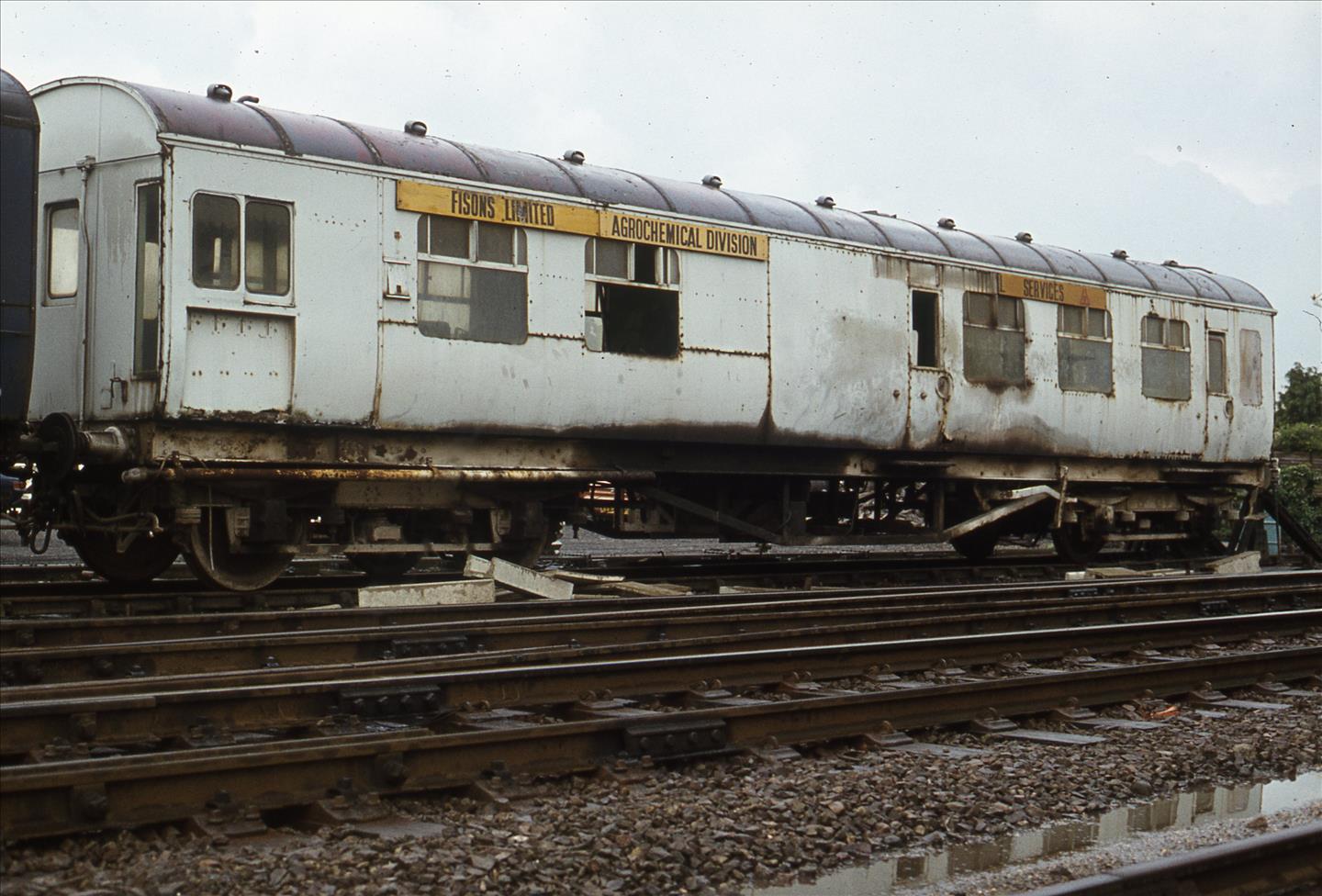
Displaced by the formation of the new train in 1975 was this Spray Coach that had been converted from an LMS Open Third. It is seen at Foxton on 9th August 1978 peior to being scrapped. Trevor Davis
Interestingly the new Spray Coach was converted from a former DMU Driving Trailer which had been withdrawn from BR service at Norwich in 1974. It was the inclusion of this in the new train that probably drew more attention to the train from enthusiasts although it was several years later before it started to appear in enthusiast number books. FA99900 arrived at Cambridge on 22 March 1975 in the consist of 5P07 Lincoln-Cambridge ecs, a train the frequently conveyed ex works dmu cars from Doncaster Works returning to Norwich, Cambridge or Stratford. 5P07 was a continuation of 2D70 0555 Doncaster to Lincoln. However, it was understood at the time that E56315 was converted not at Doncaster but at Glasgow Works. After spending the weekend at Cambridge FA99900 first arrived at Foxton on 25 March 1975.
A trial run for the the train took place on 9th May 1975 which took it to Liverpool Street station for inspection by BR management and unions.
Subsequently the train entered normal service on the Eastern, London Midland and Scottish Regions but does appear to have been rarely photographed.
The Mark IVA train was also painted in Yellow and Green in c1975 and numbered, the Spray Coach as FA99903 & Staff & Dormitory Coach as FA99905.
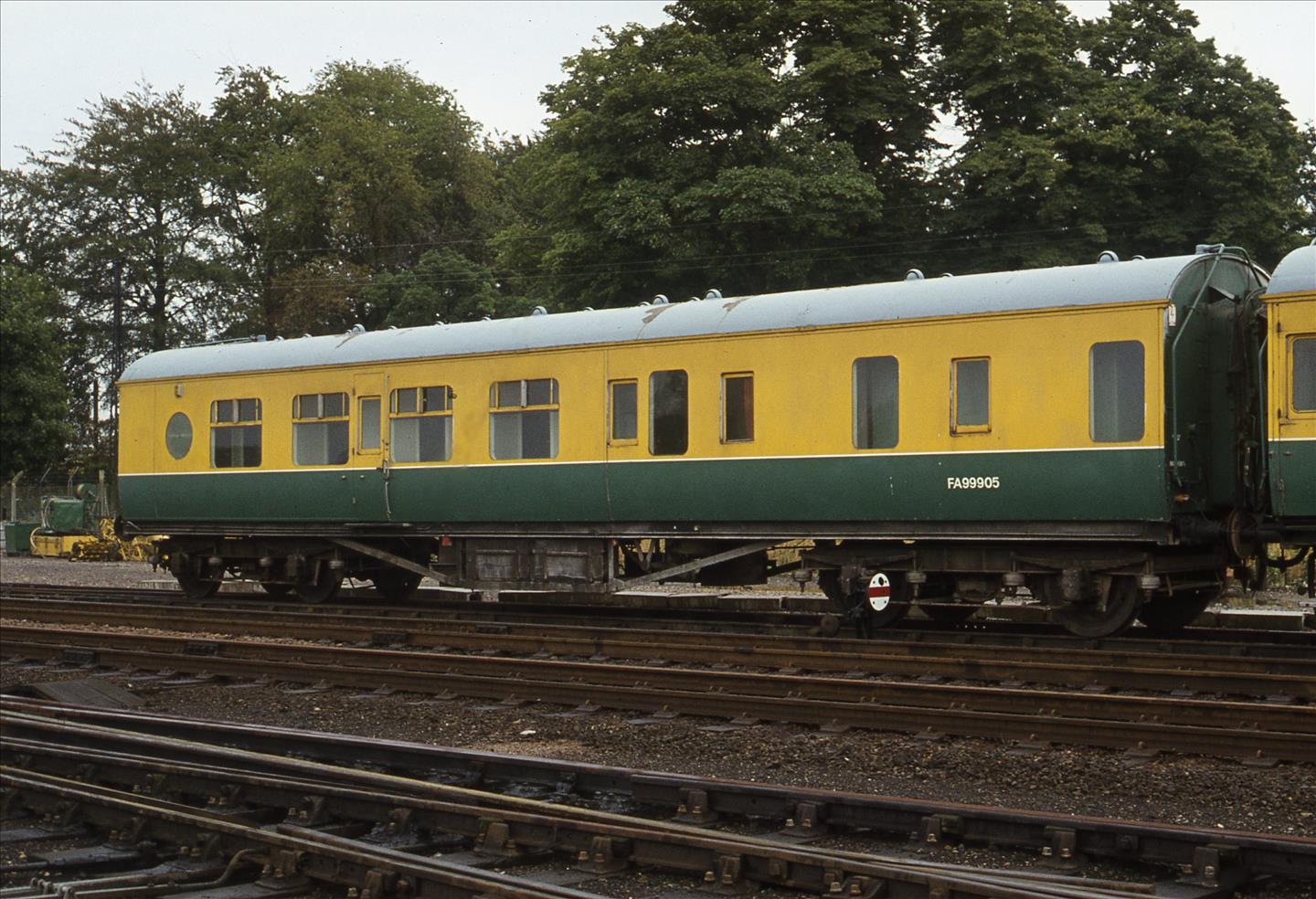
Staff & Dormitory Coach FA99905, that had been converted from a LMS Corridor Brake Third, is pictured at Foxton on 9th August 1978 coupled to Spray Coach FA99903. Trevor Davis
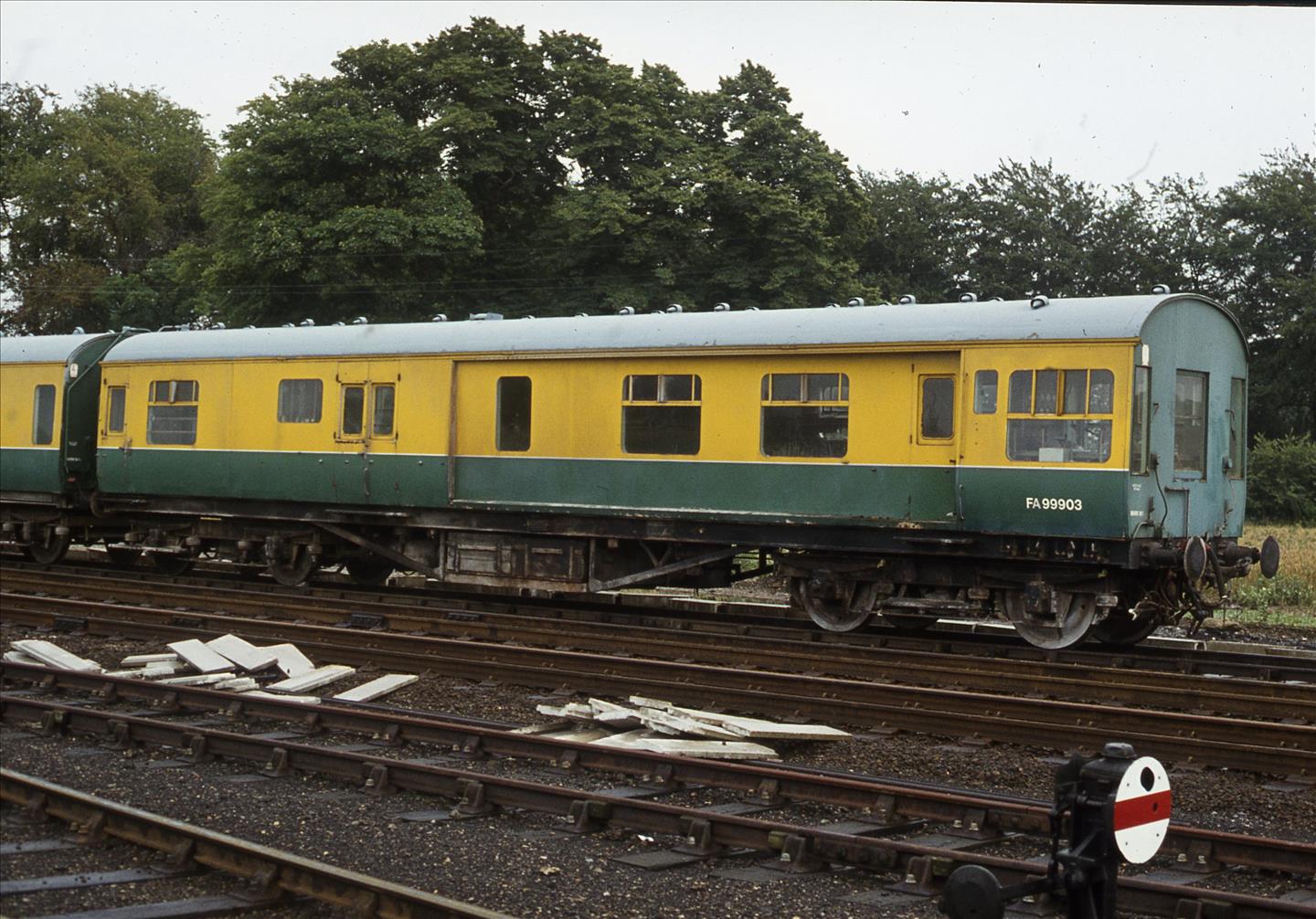
Spray Coach FA99903, that had been converted from a LMS Open Third, is pictured at Foxton on 9th August 1978 coupled to Staff & Dormitory Coach FA99905. Trevor Davis
These were formed with BR/LNER Fish Vans DB975389, DB975390 & DB975391 (see above). The only known picture can be seen at 1978 photograph
In 1978 another GWR Gangwayed Passenger Brake Van was acquired for use as a stores van. This arrived at Foxton on 1st August 1978. It was numbered FA99906 and inserted into the train. In its latter BR days this had its gangways removed but they were re-instated by Fisons. It was though not painted into Yellow & Green livery retaining its BR overall Blue. This replaced the former BR/LNER Fish Vans supplied by BR used in the Mark IVA train at the time. The train was then formed.
| Number | Withdrawn | Disposal |
| FA99903 | LMS Open Third (Lot 1401) | Spray Coach |
| FA99906 | GWR Gangwayed Passenger Brake 70 | Stores Van |
| FA99905 | LMS Corridor Brake Third (Lot 1506) | Staff & Dormitory Coach |
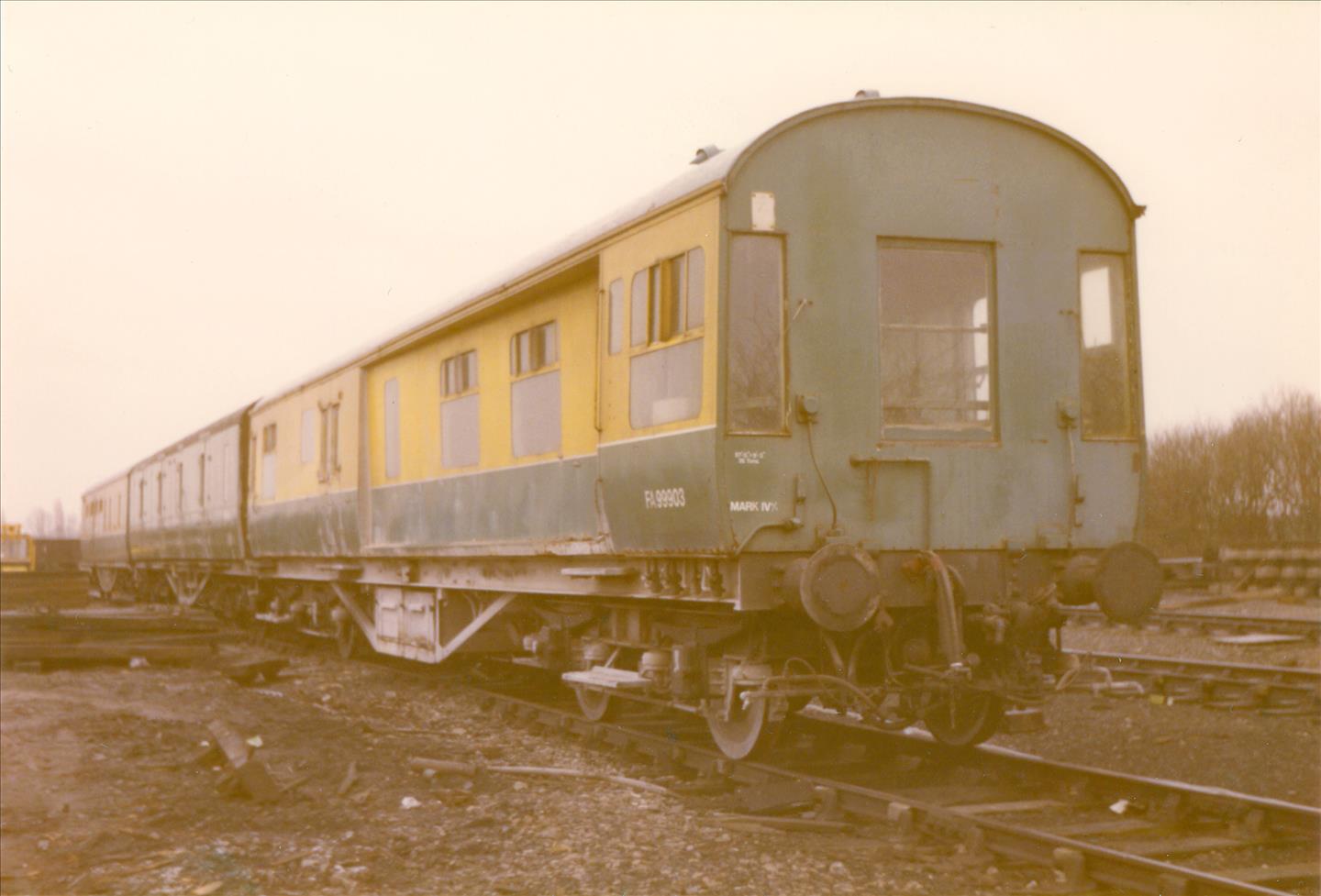
The surviving MarkIVA train formed of Spray Coach FA99903, Stores Van FA99906 and Staff & Dormitory Coach FA99905 at Chesterton Junction on 7th March 1981 Peter Hall
By March 1981 the base for the trains had moved from Foxton to Chesterton Junction, Cambridge. The sidings at Foxton were removed as part of the track rationalisation that preceded Cambridge area resignalling. A few years later the company changed its name to FBC Limited and all seven carriages were repainted into a Red/White livery. The two trains continued to be formed as previously.
Four Carriage Mark VI Train
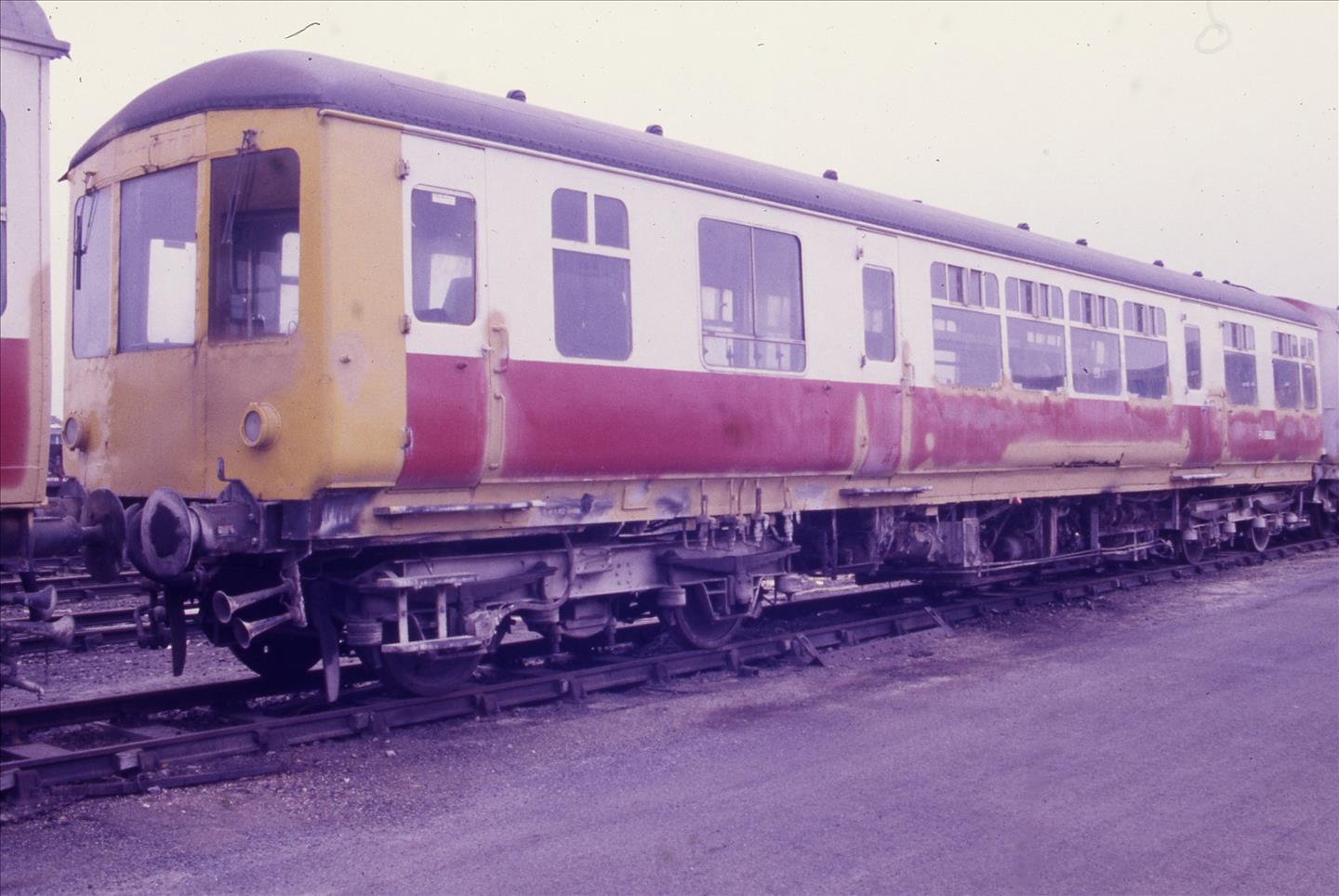
Spray Coach FA99900 formed as part of the four carriage train at Chesterton Junction, Cambridge on 7th November 1986 Trevor Davis
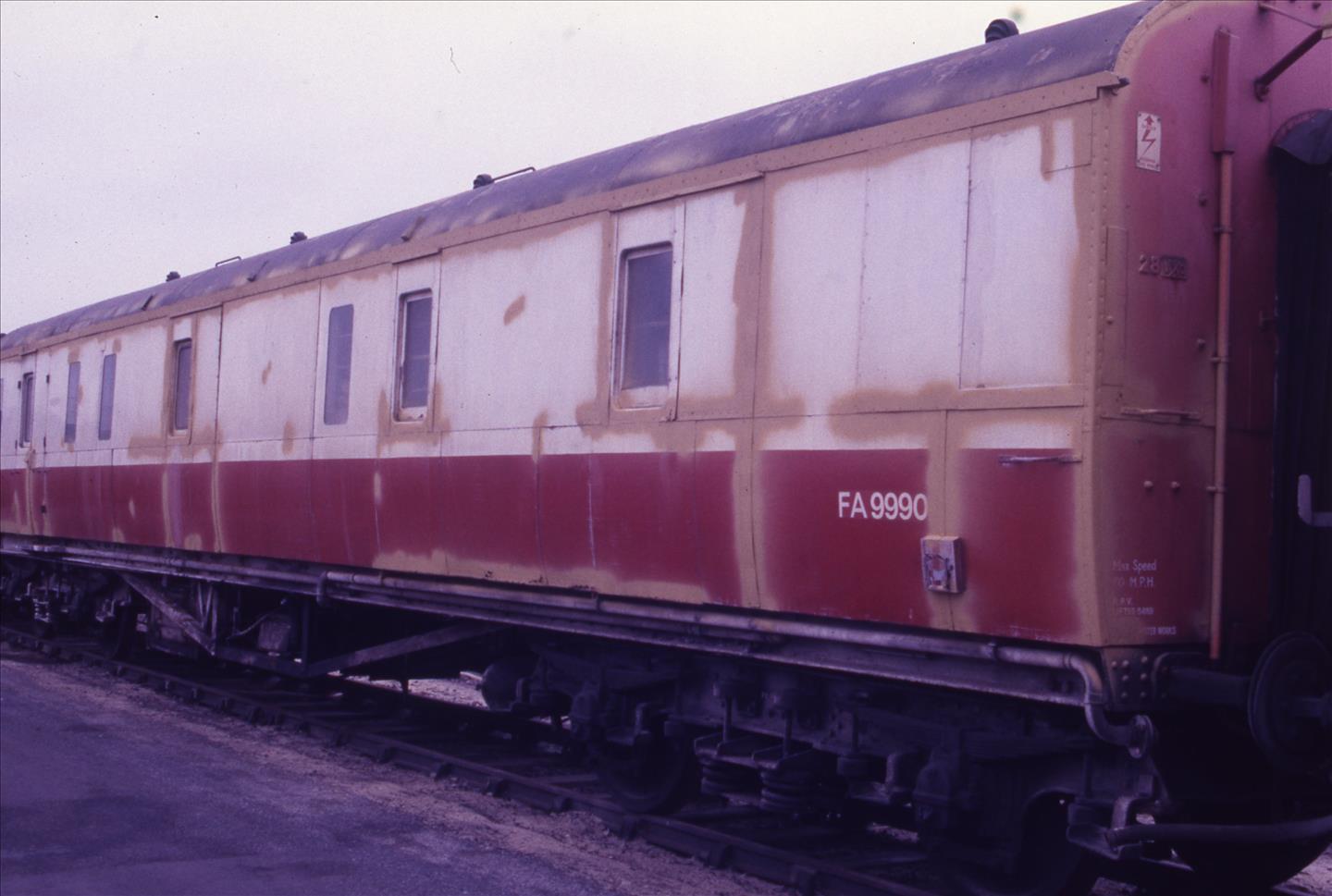
Stores Coach FA99901 formed as part of the four carriage train at Chesterton Junction, Cambridge on 7th November 1986 Trevor Davis

Staff & Dormitory Coach FA99904 formed as part of the four carriage train at Chesterton Junction, Cambridge on 7th November 1986 Trevor Davis
Three Carriage Mark IV Train

Staff & Dormitory Coach FA99905 formed as part of the three carriage train at Chesterton Junction, Cambridge on 7th November 1986 Trevor Davis
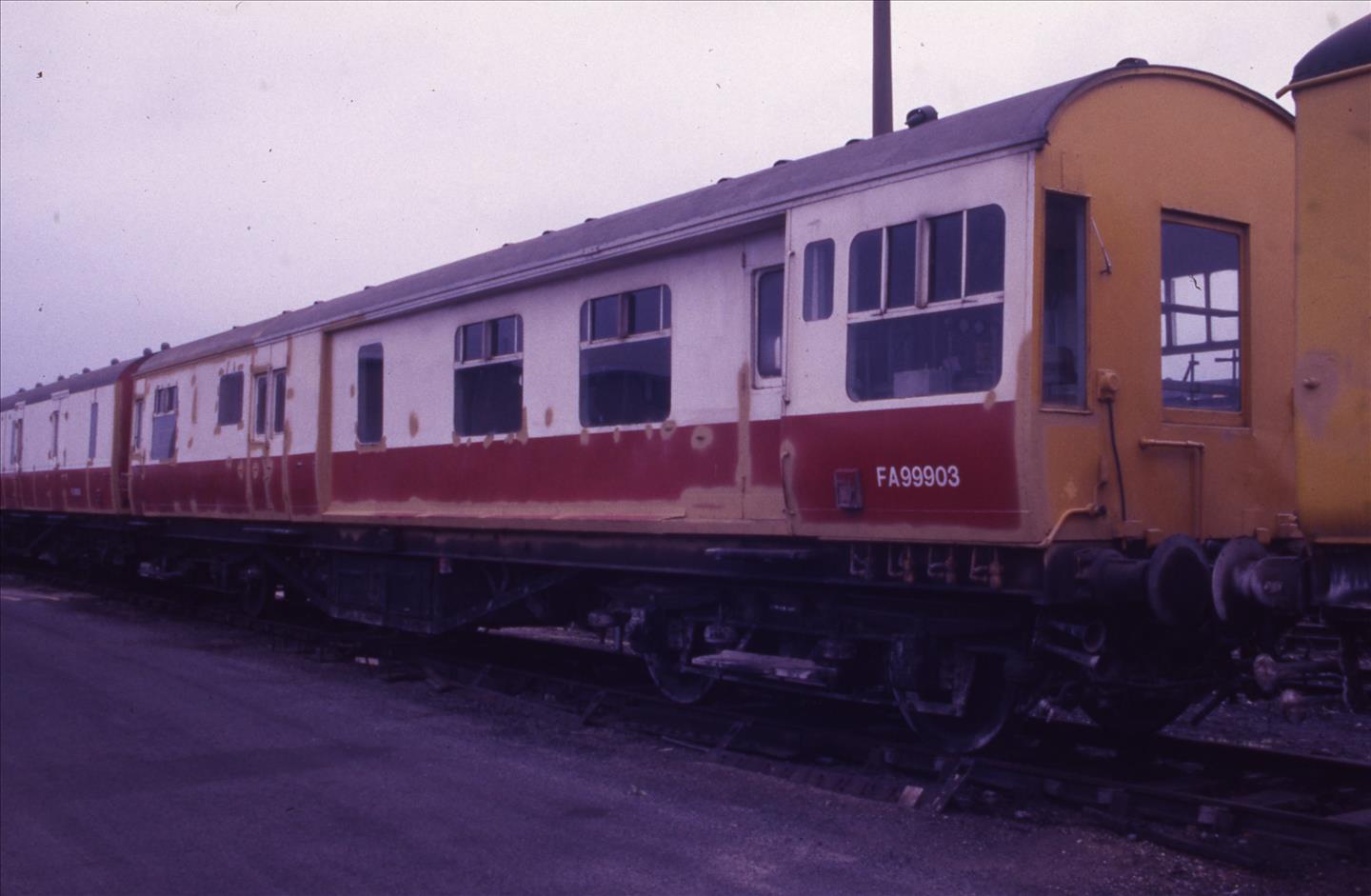
Spray Coach FA99903 formed as part of the three carriage train at Chesterton Junction, Cambridge on 7th November 1986 Trevor Davis
Following another company sale/merger they became the property of Schering Agrochemicals Ltd and were painted into that companies livery of green with a white stripe during the winter of 1987/88. Unfortunately, FA99902 suffered fire damage in early 1988 and although painted may not have operated in that livery. It was scrapped towards the end of 1988 on site at Chesterton Junction by Vic Berry of Leicester. Thus, the four carriage train was reduced to three.
Four Carriage Mark VIA Train

Spray Coach FA99900 formed as part of the four carriage train awaiting disposal at Chesterton Junction, Cambridge on 13th October 1989 Trevor Davis
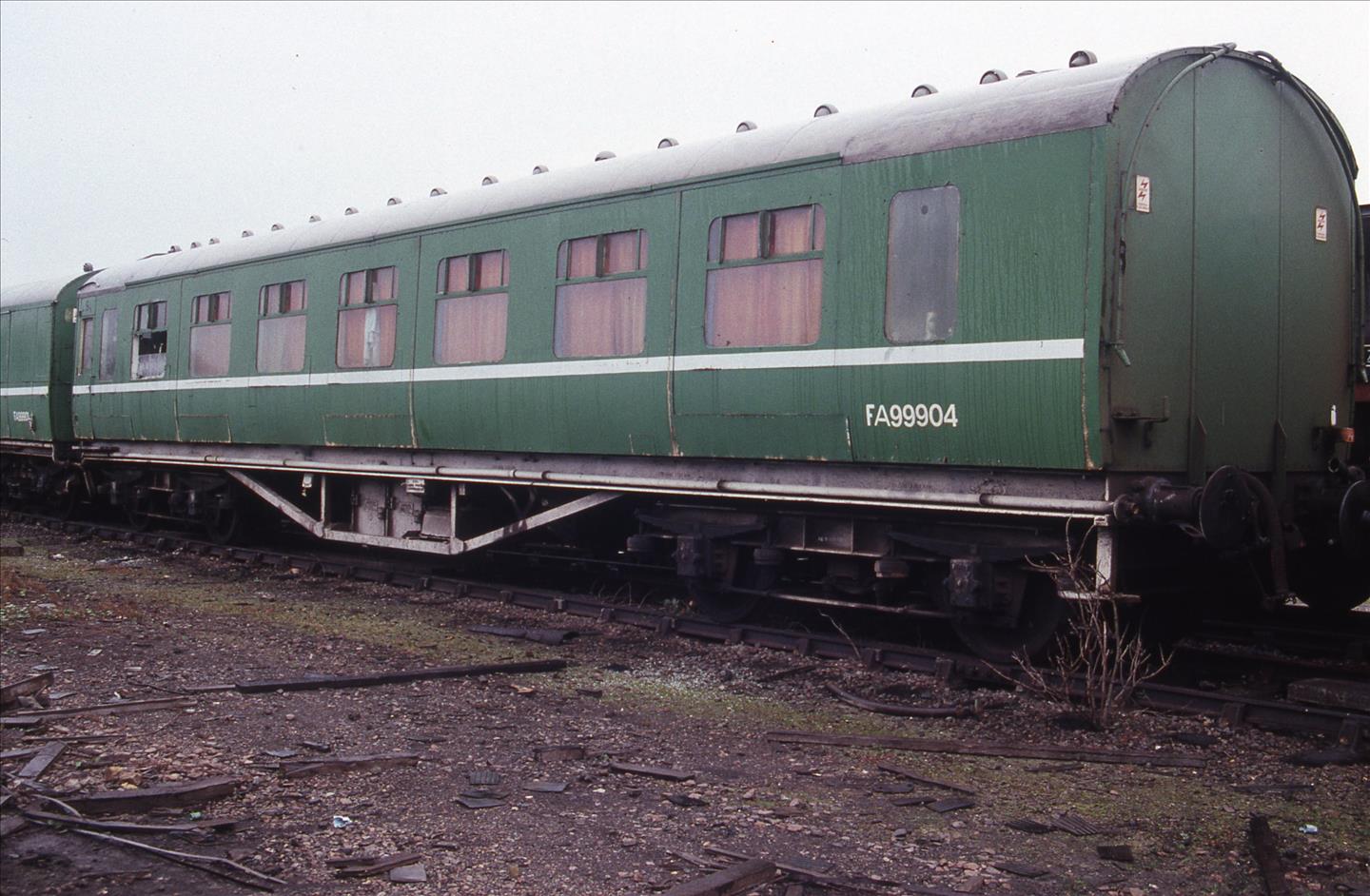
Staff & Dormitory Coach FA99904 formed as part of the four carriage train awaiting disposal at Chesterton Junction, Cambridge on 13th October 1989 Trevor Davis
Three Carriage Mark IV Train
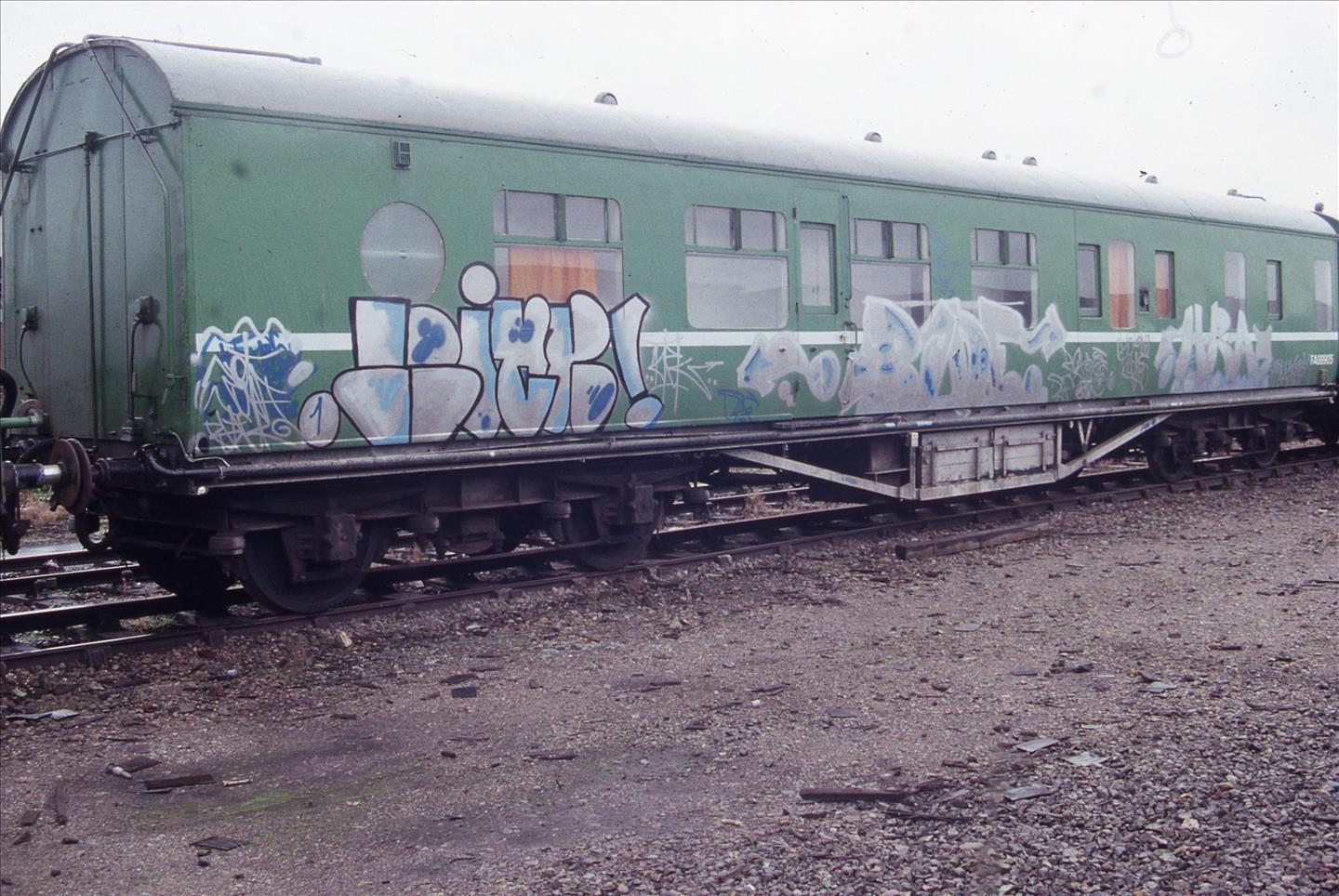
Staff & Dormitory Coach FA99905 formed as part of the three carriage train at Chesterton Junction, Cambridge on 13th October 1989 Trevor Davis
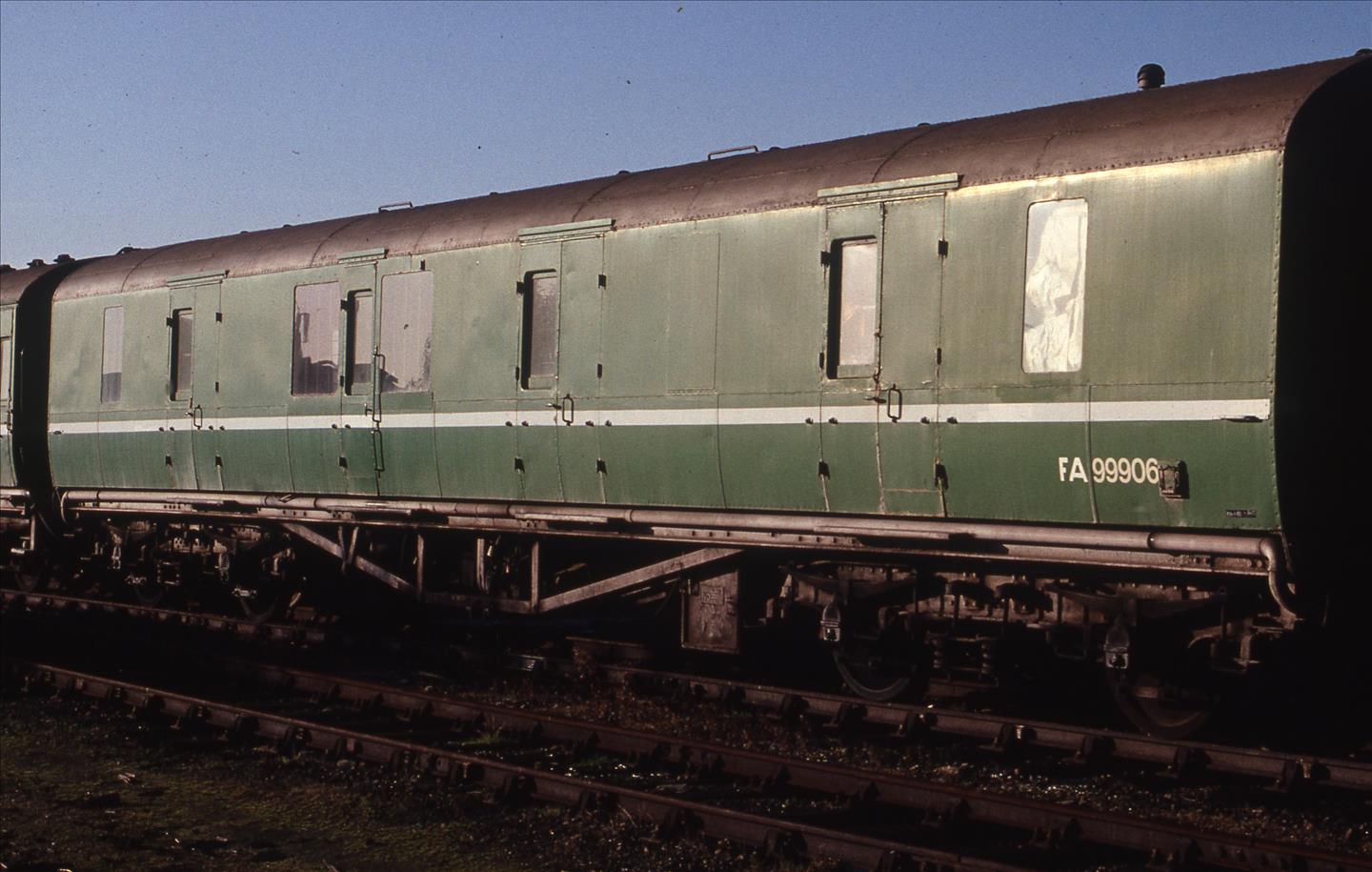
Stores Coach FA99906 formed as part of the three carriage train at Chesterton Junction, Cambridge on 13th October 1989 Trevor Davis
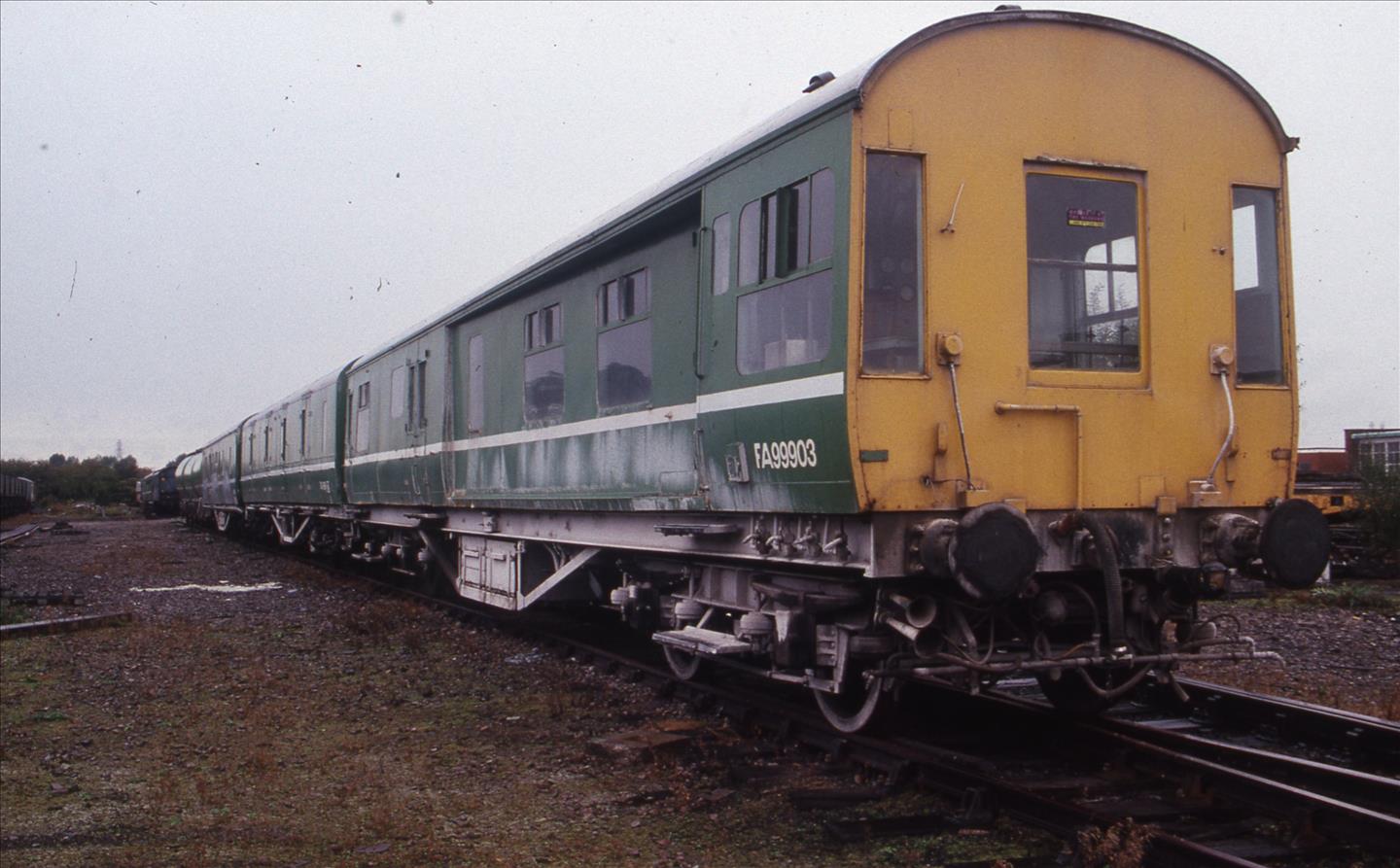
Spray Coach FA99903 formed as part of the three carriage train at Chesterton Junction, Cambridge on 13th October 1989 Trevor Davis
Both trains were taken out of use after the 1989 season, having been replaced by the new four carriage Schering Train converted from Mark 1 carriages. The six carriages being scrapped in March the following year by Vic Berry of Leicester. All were scrapped on site at Chesterton Junction except FA99900 which was taken to the companies Leicester scrap yard.
This page is maintained by Peter Hall.
